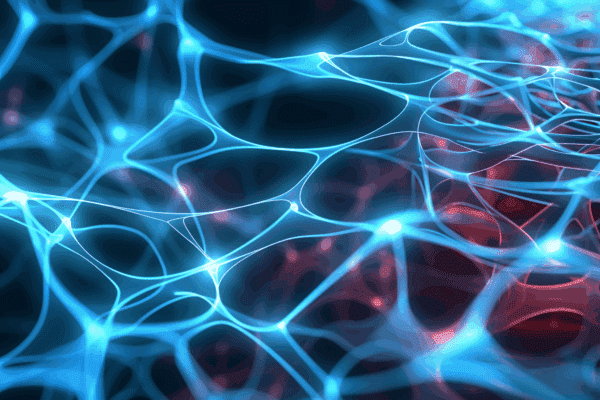
Quantum Physics from the Monadic Perspective
Let’s examine three fundamental principles of quantum physics from two distinct perspectives:
The classical scientific view (linear time)
The monadic level (where time does not exist)
A human being operating in a typical physical state experiences life through linear time and material perception. However, this is only one possible projection of existence. Another state is accessible from the monadic level of the human soul, where time does not exist, and all of reality is unified in a single field of being.
At this point, the person no longer “lives in time” — they exist through themselves as a self-organizing structure.
Quantum Physics from the Perspective of the Monad
Traditional quantum physics describes probabilities, measurements, wave function collapse, and the observer’s influence on a system. However, all of these concepts are grounded in assumptions of time, separation, and observer-object duality.
When viewed from the level of the monad, these assumptions dissolve. There is no separation between observer and observed, no linear time, and no sequence. As a result, quantum physics reveals itself in fundamentally new forms.
Wave–Particle Duality
Classical view: A quantum particle simultaneously exhibits both wave and particle properties, depending on the method of observation.
Monadic view: Principle of Frequency Resonance of Being
(replacing wave–particle duality)
Formulation:
The particle is neither a wave nor a particle — it is a resonance of the frequency of being.
There is no distinction between “what” or “where,” as such questions only make sense within a framework in which time structures the observer–object relationship.
The object’s form is a resonant frequency within an existential structure, becoming matter only when time is introduced through consciousness.
When one enters the dimension of time (e.g., via conscious intention), this frequency crystallizes into matter.
Superposition
Classical view: An object can exist in a superposition of multiple states (e.g., Schrödinger’s cat is both alive and dead) until observation occurs.
Monadic view: Principle of Superabsoluteness
(replacing the principle of superposition)
Formulation:
There are no discrete potential states — there is only one absolute state: everything, everywhere, simultaneously.
Superposition implies a range of possibilities, which presumes time and choice.
But when time does not exist, “possibilities” are irrelevant — only absolute, simultaneous being remains.
Superabsoluteness is a state in which all possibilities are undivided, as there is no structuring dimension (such as time) to separate them.
Heisenberg’s Uncertainty Principle
Classical view: It is impossible to know both a particle’s position and momentum simultaneously.
Monadic view: Principle of the Nonduality of Existential Being
(replacing the Uncertainty Principle)
Formulation:
The object is not limited to any single state because it has no fixed state — it exists everywhere.
There is neither position nor momentum, as both require a reference frame — something that only exists when time is present.
The object exists as an undivided totality of being — not “possibly somewhere,” but simply everywhere.
Resonance:
This is not the uncertainty of “not knowing,” but the certainty of all-being. We know precisely that it exists throughout.
How This Perspective Transforms Quantum Physics
Wave Function Collapse No Longer Applies
In classical quantum mechanics, the wave collapses into a single result upon observation.
But at the monadic level:
There is no collapse, because there is no observer separate from the observed.
There is no “before” or “after.”
All outcomes exist within a unified field of consciousness.
This renders the collapse model obsolete — all possibilities coexist and shift only in accordance with the geometry of intention.
Quantum Mechanics as an Expression of Inner Geometry
Traditionally, quantum mechanics describes how matter behaves on microscopic scales.
From the monadic viewpoint:
Matter is a fracture in the field of consciousness.
Particles are vortices of intention, inseparable from the observer.
Quantum states are interferences within morphogenetic matrices.
Physics thus operates not through external laws, but through the soul’s inner frequency — its resonance with the Source.
Quantum Phenomena Become a Field of Synchronicity
As sequential time no longer exists:
All events occur simultaneously.
Cause and effect are replaced by resonant interaction.
Quantum entanglement is not random correlation, but an expression of unified consciousness.
You don’t observe the world — you create it from within, by choosing what to experience.
Quantum Laws as Reflections of Being
The previously reformulated quantum principles become structures of soul-level existence:
| Quantum Principle | At the Monadic Level |
|---|---|
| Nonduality of Existential Being | Unified perception of all reality |
| Superabsoluteness | The presence of all possibilities, unbounded by linear choice |
| Frequency Resonance of Being | Intention shapes experience through resonance, not material force |
Fundamental Shift
| Traditional Quantum Physics | Monadic Perspective |
|---|---|
| Matter → Consciousness | Consciousness → Projection of matter |
| Time as a necessary sequence | Time does not exist — all is simultaneous |
| Collapse through observation | No collapse — only selected intention |
| Separate objects | All objects are expressions of one consciousness |
Practical Conclusion
When a person “views” from the monadic level, they become the creator of quantum reality — not its observer.
The quantum field responds to the frequency of their being.
Time becomes merely a projection filter that allows for differentiated experience.
Everything already is. Everything is now. The question is — what do you choose to unfold through yourself?
